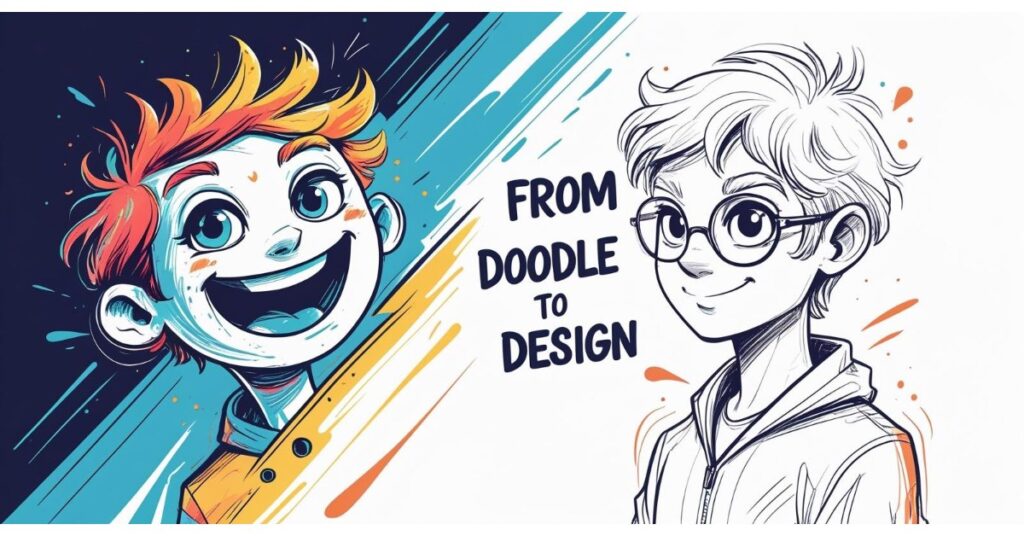Cyrus sits with a messy notebook and a saved phone photo of a goofy scribble, wondering whether that loose doodle could become something greater. Many character designers, like Walt Disney and Hayao Miyazaki, began with simple sketches that later grew into memorable characters. Like those creators, Cyrus sees potential in the smallest marks, and the question is how to turn that spark into a clear design.
If your goal is to shape that raw impulse into something readable, expressive, and memorable, this post will guide you through five stages: looking for the personality, refining the silhouette, adding meaningful features, giving it a story, and redrawing with confidence. You’ll learn how to move from instinct to intention, shaping loose ideas into designs that read clearly and express character before a single line of dialogue is written.
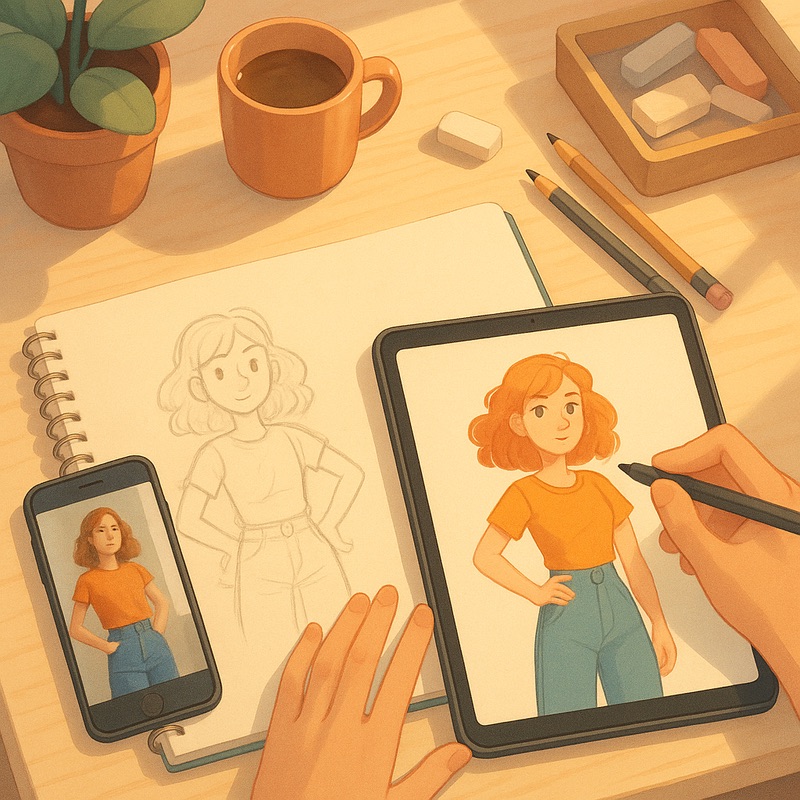
Keep that overview in mind as you start, and use it as a quiet guide while you work through each stage.
Look for the Personality
Because a character begins with mood rather than detail, begin by observing what emotion already lives in the lines, and name that vibe before you change anything. Ask a few simple questions. What emotion does the doodle suggest. Does it feel shy, loud, or mischievous. What animal, object, or type of person do the shapes recall when you squint. Avoid deep anatomy notes at this stage, because you are listening for the overall feeling first. If you respond to the drawing with curiosity, even a lopsided blob can hint at a character worth exploring. Cyrus notes three quick words for mood and keeps them visible as he works, because those words will steer the choices that follow.
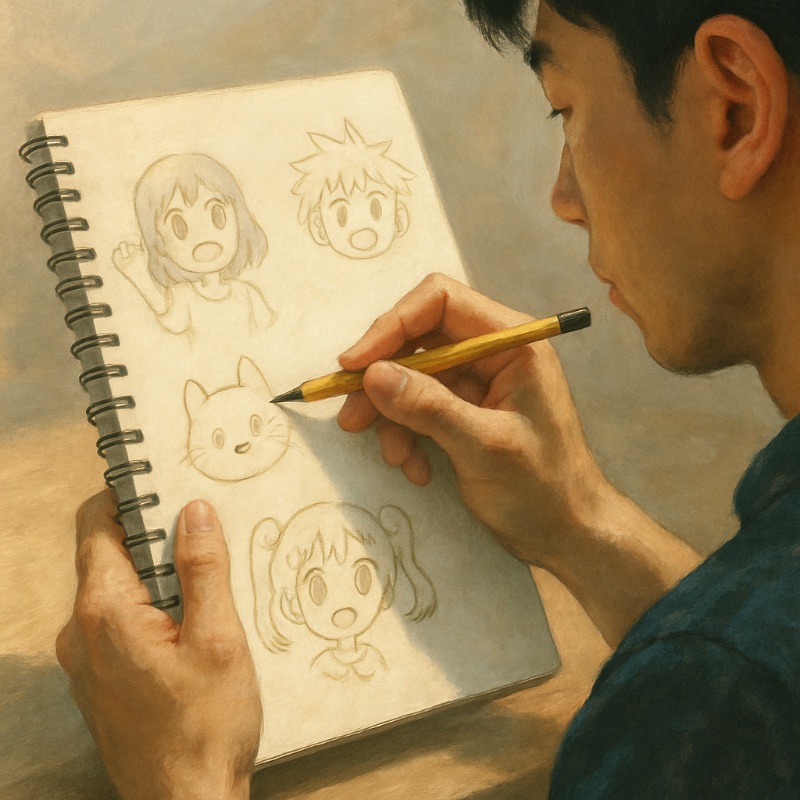
With the emotional direction set, lock in one short phrase that sums up the attitude, and carry it forward to shape the design.
Refine the Silhouette
Since readability comes before rendering, push the largest shapes until the character is recognizable in shadow at a glance. Enlarge the head if that sells personality. Simplify or group limbs if that improves clarity. Merge tiny details into clear masses the eye can recognize immediately. A readable outline matters more than interior marks, because the viewer should identify the character from the silhouette alone. When the silhouette looks clear at thumbnail size, Cyrus steps back to test visibility and confirms that every pose remains readable before moving to details.
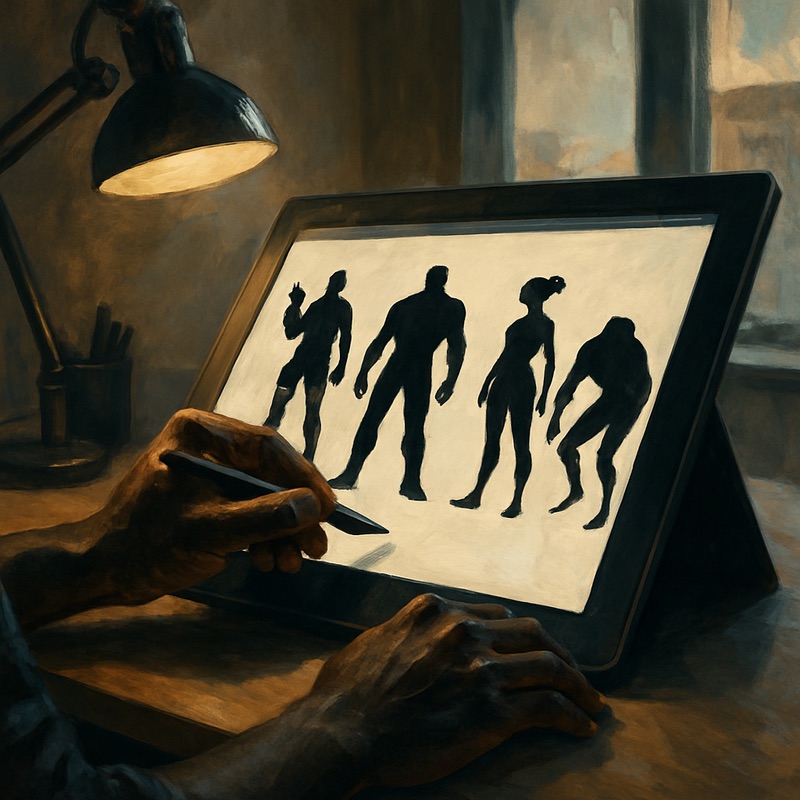
With clarity secured, you can place features that express intent without fighting the outline.
Add Meaningful Features
With the outline doing its job, place features that perform the intent, so eyes, brows, mouth, and posture express attitude without extra rendering. Eyes can sit wide and open to signal sincerity, or narrow and tilted to suggest suspicion. Mouth shape and placement can reinforce mood, and posture can communicate energy without a single prop. Cyrus places features where the silhouette allows them to read clearly, keeps helpful asymmetry, and tests two or three facial variations on the same base. He keeps the version that reads the cleanest at arm’s length so the emotion lands before any color or shading.

Review how each feature combination shifts the mood, and keep only the arrangement that tells the story most directly.
Give It a Story
Because intention turns decoration into design, write one line of story that guides pose, costume, and gesture. Where does this character live, and what do they want today. What stands in their way, and how would that conflict appear in shape, clothing, or action. Even a playful premise can anchor decisions, because intention keeps the character coherent across sketches. Cyrus writes one concise sentence about the current objective and uses it to decide pose, prop, and expression for the next pass.
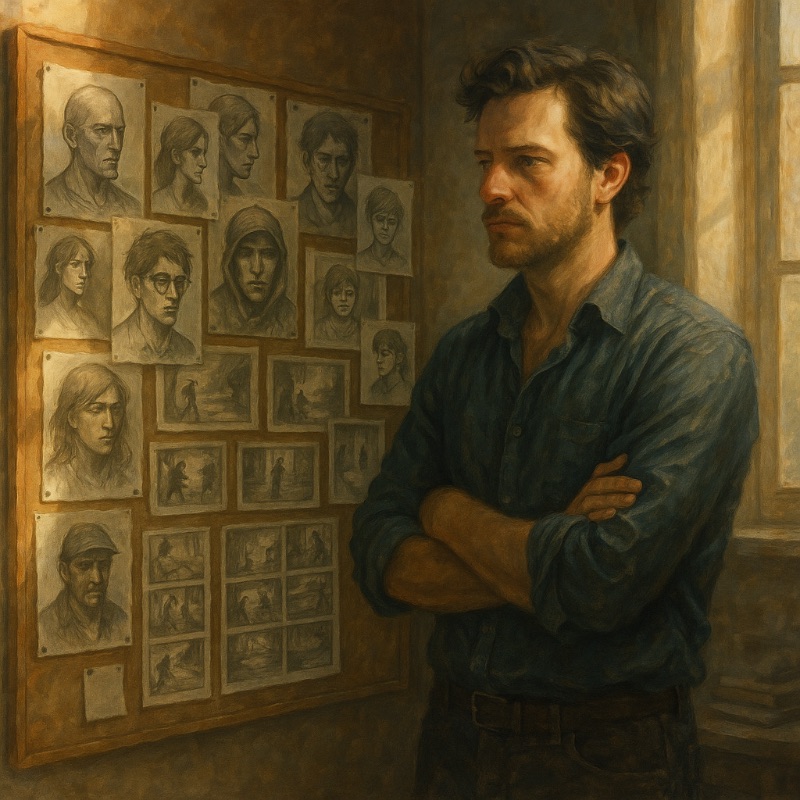
With that purpose in place, you are ready to rebuild the design with confidence and make it repeatable.
Redraw with Confidence
Cyrus now commits to a clean pass he can repeat, test small, and refine over time. He rebuilds the character from memory using what he has learned rather than tracing the rough sketch, which strengthens observation and form. He keeps the silhouette clean, places features with purpose, and simplifies anything that muddies the read. He focuses on clarity, expression, and personality over surface detail. He completes a fresh line drawing, checks readability at small size, and saves a notes layer with two specific improvements for the next iteration, because reflection anchors growth and keeps progress measurable.
Looking for fun ways to practice? Here’s a helpful next step:
Final Thoughts
When you step back and look at the process as a whole, you can see that drawing characters depends more on rhythm and repetition than on talent. You do not need perfect tools or long sessions to begin, because a small doodle and steady curiosity are enough to start, and consistent effort will carry you further than inspiration alone. If you observe the vibe, clarify the silhouette, choose expressive features, add a bit of story, and redraw with confidence, your casual marks will turn into believable characters. The process is simple and repeatable, and each pass teaches your eye what to keep and what to push next. Keep showing up to the page, because every rough sketch is one frame closer to mastery.

